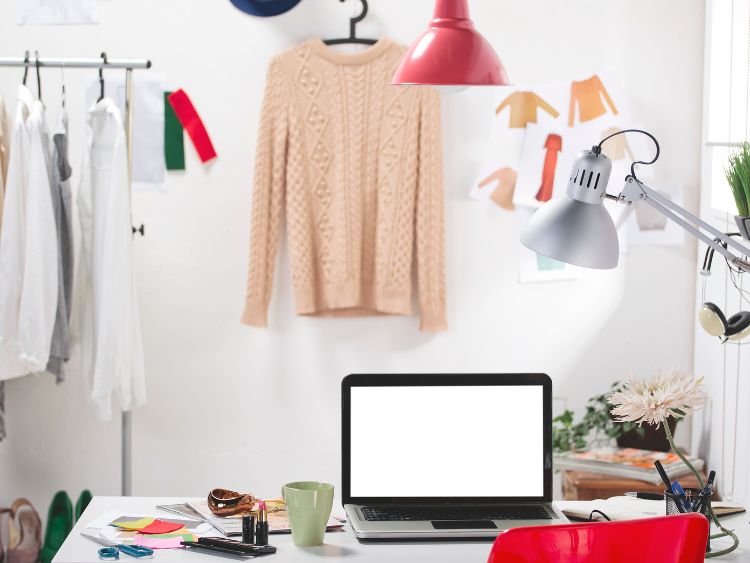A Snapshot of 1950s Fashion
The 1950s were a decade of dramatic shifts in fashion, heavily influenced by post-war optimism and a burgeoning consumer culture. When we think of 1950s fashion, images of cinched waists, full skirts, and polished pin-up girls often come to mind. This era represented the rise of ready-to-wear clothing, making fashion accessible to the everyday woman while still offering a sense of glamour. In this article, we’ll explore the major trends, iconic looks, and key elements that made the 1950s a revolutionary time in fashion history.
The Birth of Feminine Silhouettes
One of the defining characteristics of 1950s fashion was the return to ultra-feminine shapes. After years of rationing during the war, women embraced fuller skirts, fitted bodices, and dresses that celebrated their curves. Christian Dior’s “New Look,” introduced in 1947, heavily influenced the decade’s aesthetic, with its emphasis on hourglass figures and flowing fabrics.
Key Elements of 1950s Feminine Style:
- Cinched waists: Dresses often featured tight waistbands, accentuating the hourglass figure.
- Full skirts: Whether it was a circle skirt or a poodle skirt, full, voluminous skirts were a staple.
- Peter Pan collars: These cute, rounded collars were popular on blouses and dresses alike.
- Pencil skirts: For a more streamlined look, women opted for figure-hugging pencil skirts, often paired with heels.
The emphasis on a tiny waist paired with a fuller skirt created a glamorous silhouette that was both elegant and playful. Women were no longer restricted by utilitarian clothing; instead, they reveled in the joy of dressing up.
Fashion Icons of the 1950s
The influence of Hollywood cannot be understated when it comes to 1950s fashion. Stars like Marilyn Monroe, Audrey Hepburn, and Grace Kelly epitomized the glamour and style of the time, each bringing her unique twist to the trends of the day.
- Marilyn Monroe: Known for her sultry looks, Monroe often wore figure-hugging dresses that emphasized her famous curves. Her white halter dress from The Seven Year Itch remains one of the most iconic outfits in fashion history.
- Audrey Hepburn: Hepburn’s style leaned towards simplicity and elegance. Her role in Breakfast at Tiffany’s cemented the little black dress as a timeless wardrobe staple.
- Grace Kelly: As both a movie star and a real-life princess, Grace Kelly embodied grace (no pun intended) with her tailored suits, soft pastels, and sophisticated accessories.
1950s Casual Wear: Everyday Chic
While the evening looks of the 1950s were glamorous, the decade also gave birth to iconic casual styles. One of the most recognizable pieces of casual wear was the poodle skirt. Typically worn by teenagers, these skirts featured appliqués of poodles, records, or other playful designs, making them fun and fashionable.
Key Casual Pieces:
- Poodle skirts: Paired with a tucked-in blouse and saddle shoes, poodle skirts were the ultimate in youthful, playful fashion.
- Capri pants: Women began embracing pants more in the 1950s, with slim-fitting Capri pants becoming a popular choice for casual wear.
- Cardigans: Often worn over dresses or paired with skirts, the cardigan was a versatile staple in every woman’s wardrobe.
The Role of Accessories in 1950s Fashion
Accessories played a significant role in completing the 1950s look. Gloves, hats, and pearls were practically mandatory for any polished outfit. Women also embraced handbags that coordinated with their outfits, ensuring that every detail was perfectly in place.
- Pearls: Nothing screamed elegance more than a simple strand of pearls, which were a staple accessory for women in this era.
- Cat-eye glasses: These bold, angular frames became a fashion statement, especially among intellectuals and fashion-forward women.
- Gloves: Whether for evening wear or a casual day out, gloves were an essential accessory in the 1950s, often adding an air of sophistication to any outfit.
The Influence of 1950s Men’s Fashion
While women’s fashion took center stage in the 1950s, men’s fashion also saw significant changes. The typical 1950s man embraced sharp tailoring, casual wear like bowling shirts, and even a touch of rebellion with leather jackets.
Key Men’s Fashion Trends:
- Tailored suits: Men’s suits were well-fitted, often worn with slim ties. The conservative, clean-cut look was popular for work and formal occasions.
- Leather jackets: Thanks to icons like James Dean and Marlon Brando, leather jackets became synonymous with rebellious youth.
- Bowling shirts: A staple of casual menswear, these shirts often featured bold colors and patterns, making them perfect for a night out with friends.
Fashion Trends that Stood the Test of Time
Though trends come and go, several elements of 1950s fashion have made their way back into modern style. Designers today still draw inspiration from this iconic era, bringing retro looks to contemporary audiences. The high-waisted skirts, cat-eye glasses, and tailored dresses of the 1950s can often be seen on fashion runways and in street style.
FAQs About 1950s Fashion
Q: What were some of the most popular fabrics in 1950s fashion?
A: Cotton, silk, and wool were commonly used fabrics in the 1950s. Many dresses also featured taffeta or satin for a more formal, glamorous look.
Q: How did 1950s fashion differ between day and evening wear?
A: Daywear was typically more casual, with fuller skirts, blouses, and practical accessories. Evening wear, on the other hand, was all about glamour—think figure-hugging dresses, heels, and pearls.
Q: What were the go-to hairstyles for women in the 1950s?
A: Hairstyles in the 1950s were usually short and curled. Women often styled their hair in soft waves or pin curls, with styles like the “beehive” becoming popular towards the end of the decade.
Conclusion: The Lasting Legacy of 1950s Fashion
The 1950s were a defining moment in the history of fashion, where femininity, elegance, and playful rebellion coexisted. From the structured dresses to the bold accessories, every outfit was a statement. It’s no wonder that elements of 1950s fashion continue to influence modern style, making it one of the most iconic decades in fashion history.

